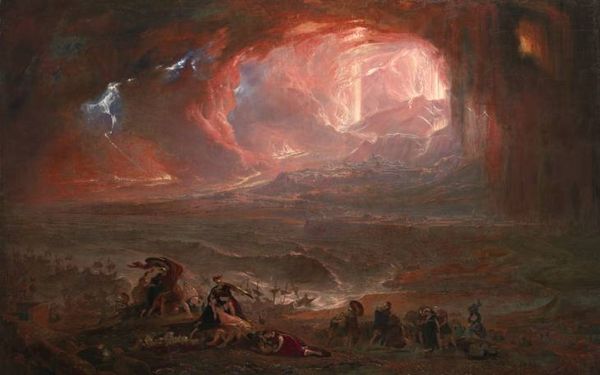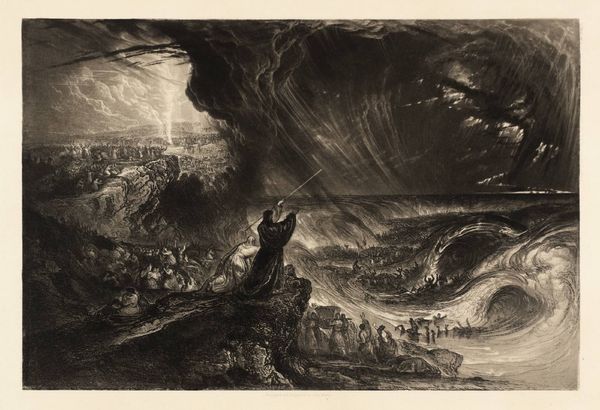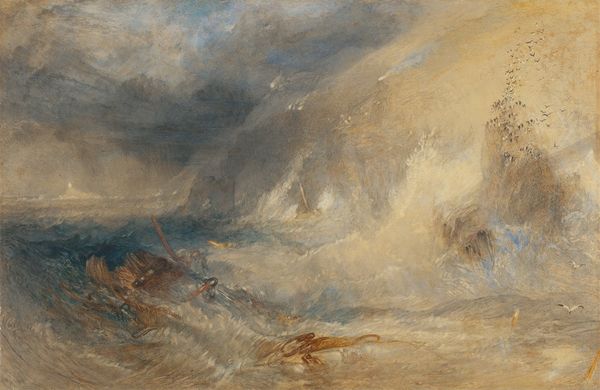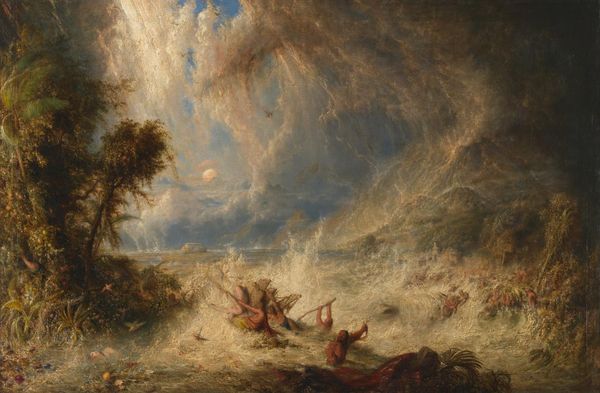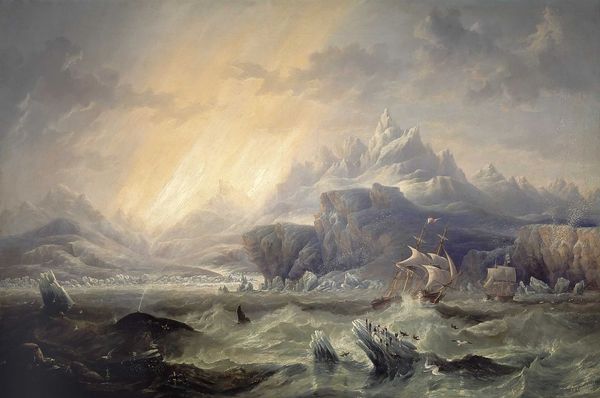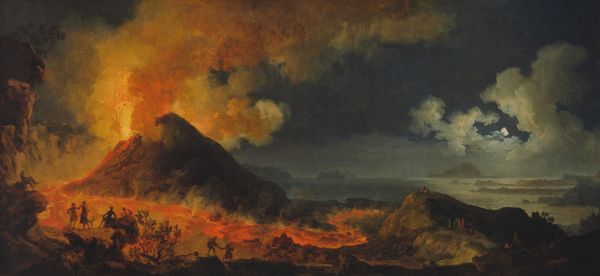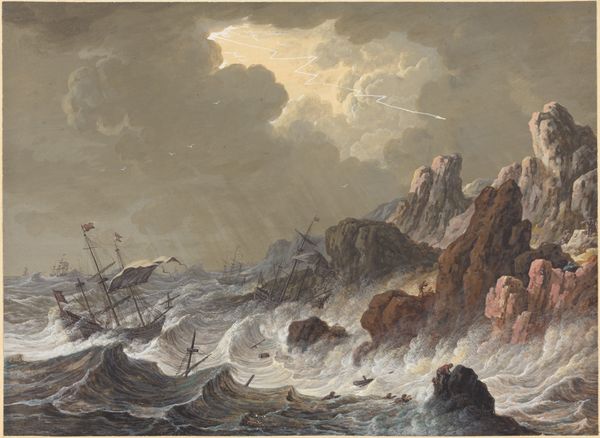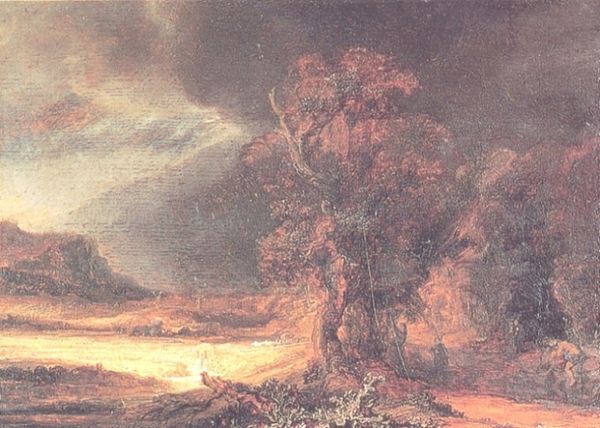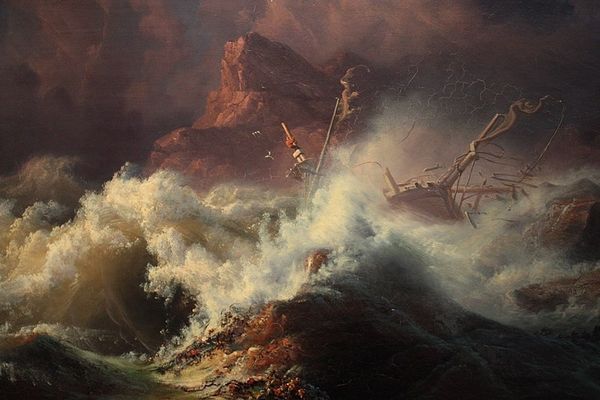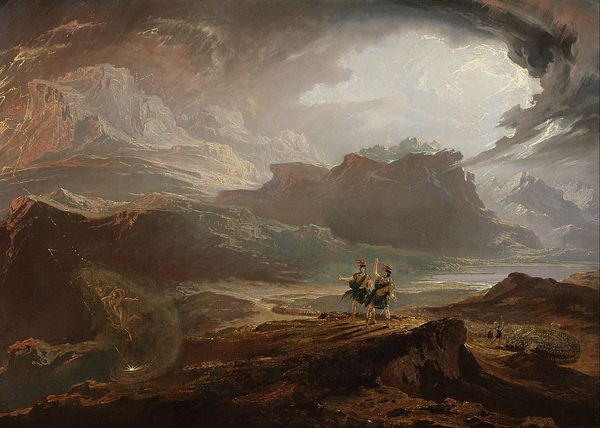
painting, oil-paint
#
painting
#
oil-paint
#
landscape
#
oil painting
#
romanticism
#
history-painting
#
watercolor
#
sublime
Copyright: Public Domain: Artvee
Editor: This is Turner's "Vesuvius in Eruption," painted between 1817 and 1820 using oil paints. The colors are overwhelmingly fiery, with a definite sense of chaos. What can you tell us about it? Curator: Consider how Turner uses the volcano, Vesuvius, as more than just a geographical feature; it becomes a potent symbol. Volcanoes, throughout history, often represent both destruction and creation, serving as reminders of nature's immense power, almost as if challenging humankind. Do you see any of those elements reflected here? Editor: Absolutely. There's this push and pull – a terrifying eruption, yes, but also a kind of awesome spectacle. It is Sublime with a capital S. I'm also noticing figures fleeing in the foreground – what does that add to the painting’s meaning? Curator: Those figures provide crucial context. Turner isn't merely depicting a natural event. He is including humankind's reaction, those cultural and psychological responses to immense power. Do you notice the overall tonal scheme, particularly how it all pulls to the fore the symbol of fire as cleansing agent, maybe an announcement for renewal of the space, as the people are literally being cleansed by it? Editor: I see what you mean! The fleeing figures emphasize the immediate human impact, but then that symbolism of rebirth places the event in a broader historical and even mythical context. Curator: Exactly. And remember, Turner travelled to Italy. Experiencing the landscape and light directly would have been integral to his rendering of the symbolic weight this scene carries. Perhaps also to experience it personally, the people who witnessed and escaped Vesuvius' wrath were also transformed, and reborn elsewhere with their experiences. Editor: That’s incredible. I had focused so much on the immediate visual drama that I hadn’t considered those deeper symbolic layers. Curator: Visual symbols become a dialogue, where you are now party to interpreting its impact. Turner is indeed prompting questions, from his moment in time and even to the present!
Comments
No comments
Be the first to comment and join the conversation on the ultimate creative platform.
